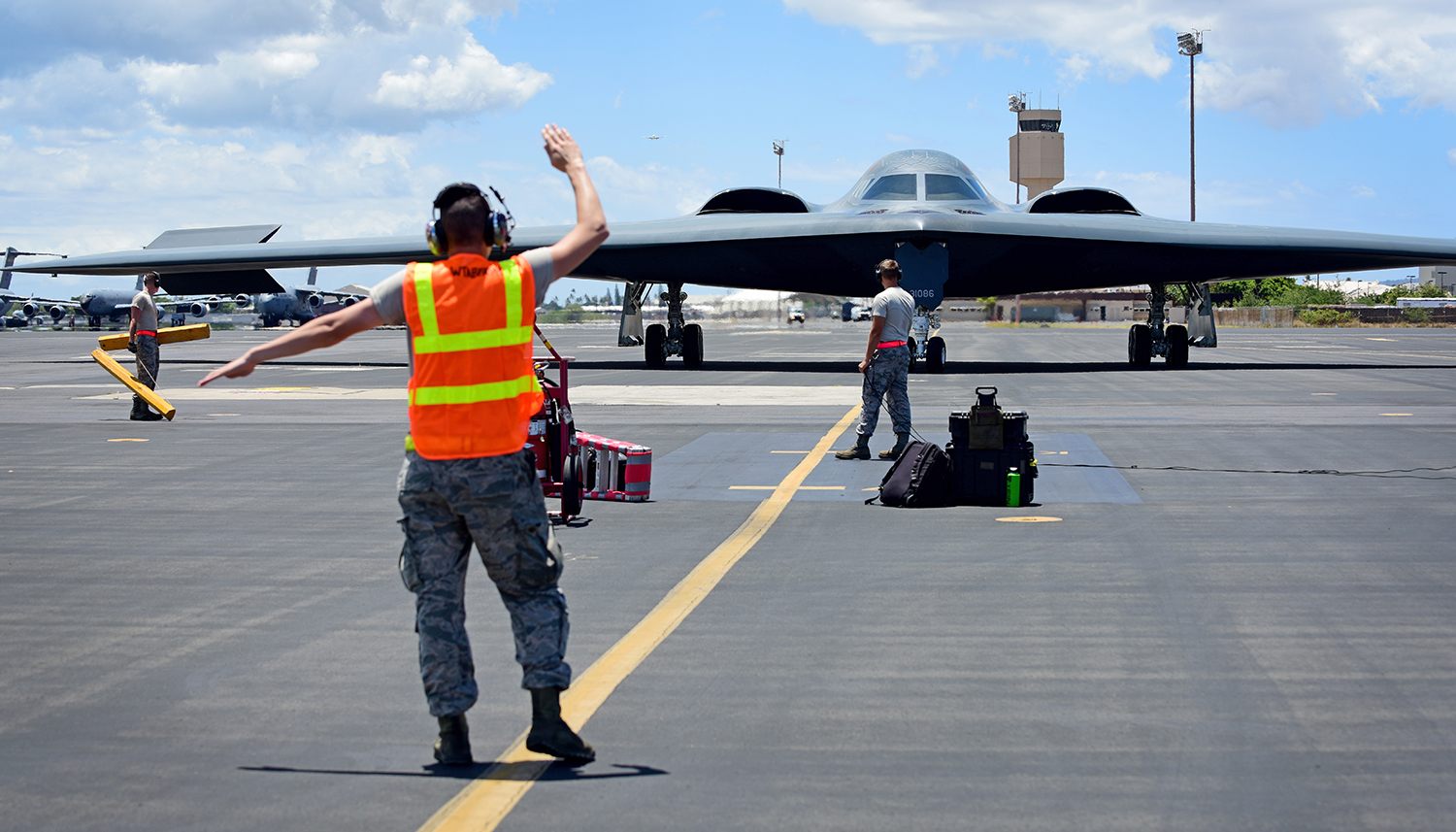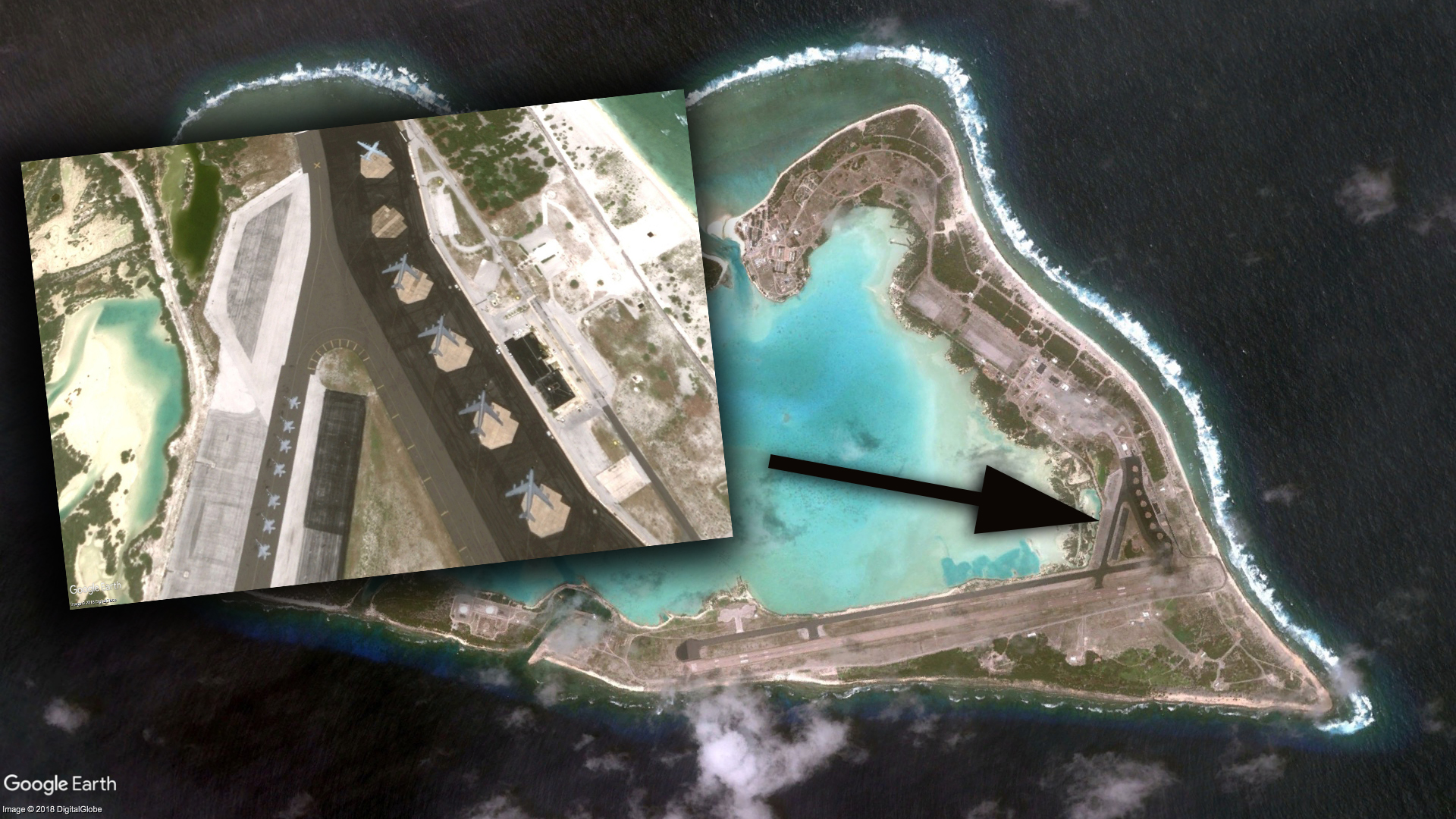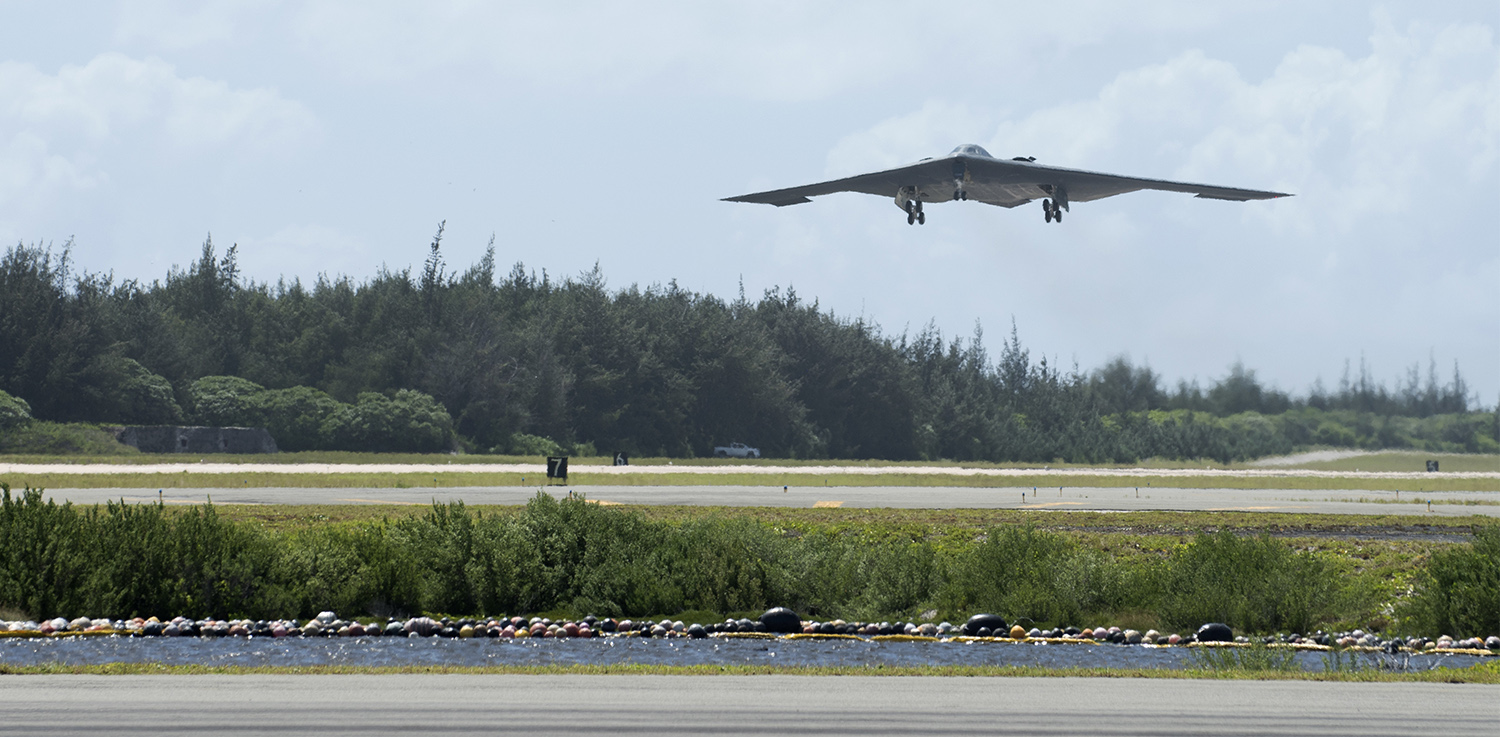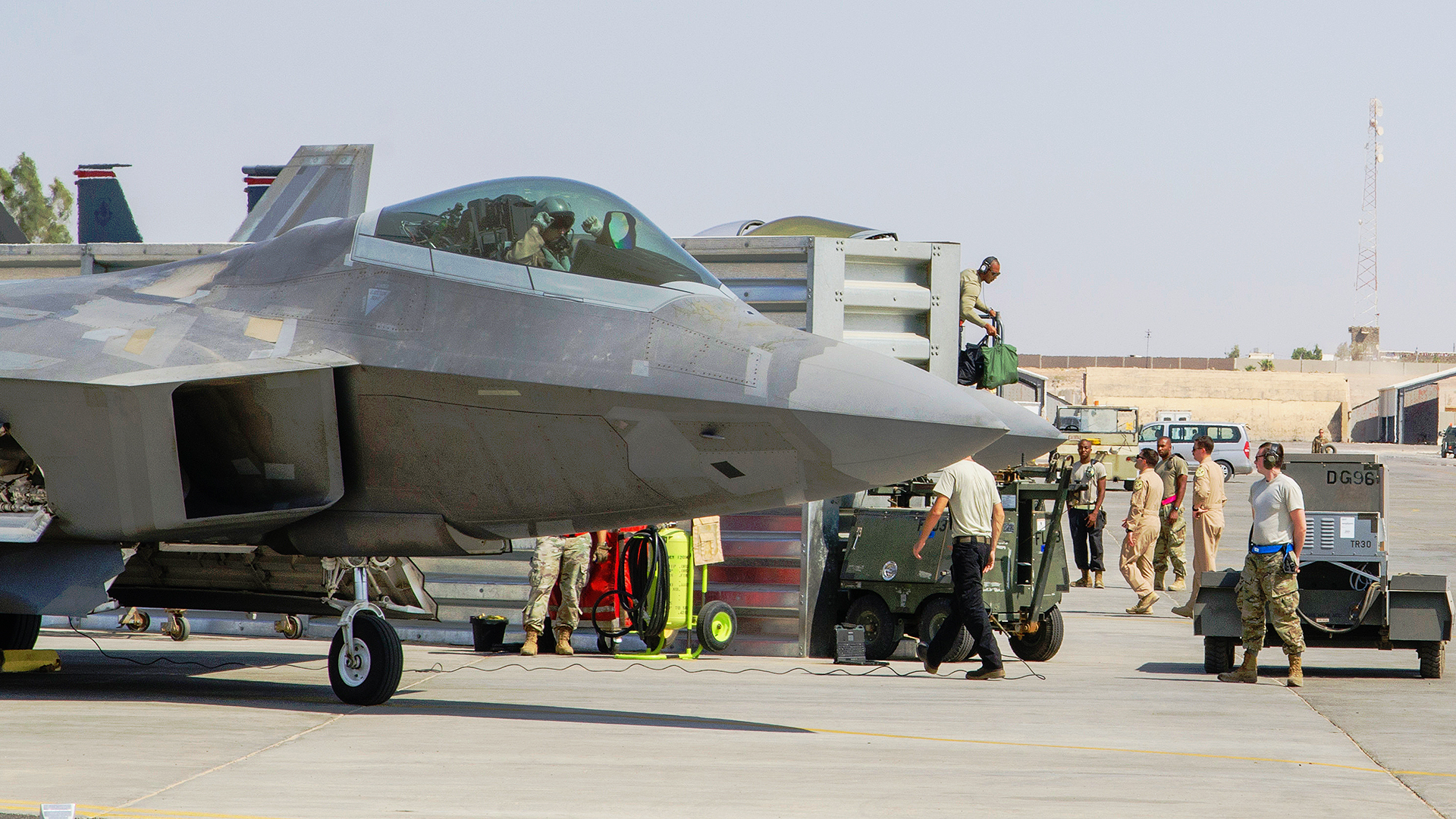As the USAF comes to terms with the realities of what a peer state conflict would look like and just how vulnerable its sprawling, well-established bases are, the flying force is taking its most capable but also most finicky aircraft and challenging them to operate from less developed locations. This is part of a larger Air Force initiative that aims to make combat units able to deploy on very short notice to locales where bases really don’t exist at all and will have to be built quickly from the ground up.
Just in the last week, F-22s from Al Dhafra Air Base in the UAE packed what they could in a single KC-10 Extender and flew to an austere field far closer to the Syrian conflict. Meanwhile, B-2s that are temporarily forward deployed to Hawaii used remote Wake Island as a pitstop during combat training operations.
Spirits On Wake
The B-2s are currently on rotation to Hawaii as part of the U.S. Strategic Command’s Bomber Task Force. It’s the first deployment of B-2s to the island ever—B-2s have only stopped over briefly before—with a handful of the stealth bombers calling Joint Base Pearl Harbor-Hickam home on the island of Oahu for a number of months.

The B-2’s training sorties can see them fly to distant locales in the Pacific region and operating with various allied assets, but on September 14th, 2018 the B-2s made their way to America’s remote airfield outpost on Wake Island.

The island was made famous during WWII, but today it is dominated by a relatively large airfield that has extensive dispersal areas that can accommodate the largest aircraft in the USAF’s inventory. Although it sees fighters being dragged across the Pacific by tankers, as well as military transports and occasional airliners making emergency landings, this seems to be the first time a B-2 has set down there.

Traditionally, the B-2s are locked into operating out of just four airfields—their home base in Whiteman AFB in Missouri, Andersen AFB on Guam, Diego Garcia in the Indian Ocean, and RAF Fairford in the United Kingdom. At Fairford and Diego Garcia, large clamshell retractable shelters have been installed specifically to provide a place to keep the stealth bomber’s sensitive skin out of the elements.
The other bases have large hangars that the B-2s can use if need be. So opening up operations at Hickam AFB in Hawaii—which is co-located with Honolulu International Airport—is certainly a departure from the norm, as is landing on austere Wake Island—which is 2,300 miles from any form of robust support infrastructure. In the past, B-2s have bombed targets on Pohakuloa Training Area in Hawaii, but they flew from Guam to do it

The method used for this operation was ‘hot pitting’ which means keeping the engines running while the aircraft is refueled by ground crews. The tactic is used for everything from increasing training sortie rates to rapidly refueling and rearming combat aircraft at forward operating locations near enemy lines during a time of war to get them back in the fight faster. For a plane as complex as the B-2, not shutting down the aircraft during refueling can work as a big helping of extra insurance that it will not break before getting back into the air.
Lt. Col. Nicholas Adcock, Air Force Global Strike 393rd Bomber Squadron commanding officer, described the tactic and the reason for making the pitstop at Wake Island in a USAF release:
“Hot-pit refueling allows us to maximize time in the air versus on the ground… It saves turnaround time. Practicing this technique helps us ensure our effectiveness as a force and keeps us ready, capable and lethal.
This deployment [and training] shows that the B-2 stealth bomber force can do more than operate from Whiteman Air Force Base… It shows that we’re adaptable enough to fly and strike from at home or abroad.”

Wake Island, which serves as something of middle-point between Guam and Hawaii, is incredibly significant strategically. During a crisis in Pacific Theater, especially one with China, the island’s 9,800-foot runway, ample fuel reserves, and large dispersal area would act as a refuge for aircraft forward based in Japan and elsewhere from barrages of ballistic and cruise missiles. Even Guam is at risk from high-volume ballistic missile attacks. With tanker support stretched very, B-2s could find themselves using the remote outpost for refueling as they transit between Hawaii and their targets far to the west.
With all this in mind, it makes great sense that B-2 crews would become familiar with operating from Wake Island. But above all else, this operation shows how even the finicky B-2 Spirit, of which only 20 exist, are getting in on the dispersed operational doctrine that the USAF has said it will begin focusing to a far greater extent than in the past.
Raptor On The Road
Two days prior to the B-2’s visit to Wake Island, F-22s assigned to the 380th Air Expeditionary Wing at Al Dhafra Air Base in the UAE forward deployed a handful of F-22s to an ‘undisclosed location’ in the Middle East (which is really no mystery and can be discovered in a matter of minutes with the help of Google Earth). The F-22 team accomplished this by taking just what they could fit in a KC-10, with the tankers also working as a personnel transport and refueling platform for the trip.

This exercise was an operational, streamlined version of the Rapid Raptor concept that the F-22 community has evolved over the last half-decade. Rapid Raptor is a quick deployment capability that aims to see four F-22s deploy virtually anywhere in the world with just 72 hours notice. Locales can include very austere locations with minimal permanent support infrastructure. In the case of this ‘combat agility’ exercise, the F-22s and their support personnel only had what they could pack in a KC-10 to sustain themselves. During their stay at the ‘undisclosed location,’ the F-22s flew combat air patrols over Syria, which also adds another realistic facet to such an operation.

It’s exciting not only to see America’s most capable combat aircraft expanding their operational portfolio, but also that the USAF is really coming to terms with just how vulnerable their big bases are in pretty much every major flashpoint region on the planet. We have already gone into great detail as to why being able to quickly distribute air power throughout a theater is so tactically important beyond survivability concerns—and clearly, stealth aircraft aren’t stealthy or uniquely survivable at all while sitting on the ground at a huge base—but being able to do so can also help alleviate logistical hurdles as well, like lack of tanker support.
With all this in mind, there can be little doubt that we will be seeing stealth aircraft pop-up at less than established or pristine operating locations far more regularly in the very near future and periphery logistical bases like Wake Island will begin to emerge at forefront of America’s air combat doctrine going forward.
Contact the author: Tyler@thedrive.com
